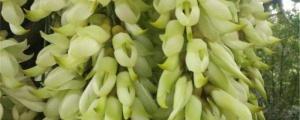Introduction
Water plants are a significant part of aquatic ecosystems, playing an essential role in maintaining the balance of the ecosystem. Water plants are also known for their valuable contribution to the environment by absorbing and releasing oxygen and carbon dioxide in the water. One of the most intriguing questions about water plants is "what is the fastest-growing water plant in the world?" In this article, we will explore the answer to this question.
The Definition of the Fastest Growing Water Plant
The term "fastest growing water plant" concerns the speed of growth measured in a specific period. It is essential to note that several factors determine the growth rate of water plants, such as water temperature, availability of nutrients, light, CO2, and others. The categorization of a water plant as the "fastest growing" can vary over time and location. Despite these variations, some aquatic plants are known for their incredible ability to grow rapidly, and one of them is water hyacinth.
Water Hyacinth: The Fastest Growing Water Plant in the World
Water hyacinth (Eichhornia crassipes) is a free-floating plant that is native to South America but has spread to other parts of the world, including Africa, Australia, and Asia. This plant is known for its rapid growth rate and ability to form dense mats of vegetation over large areas of water. Water hyacinth can double its biomass in as little as 6 to 18 days, which makes it the fastest-growing water plant in the world.
Water hyacinth grows best in warm, tropical environments with an annual temperature range of 6 to 38 °C. It also needs plenty of sunlight, nutrients, and carbon dioxide to thrive. These conditions make it troublesome in many parts of the world, where it has spread rapidly, causing significant ecological problems.
The Benefits and Problems of Water Hyacinth
Water hyacinth has some benefits, such as its ability to purify water by absorbing excess nutrients, heavy metals, and toxins from the water. It also provides shelter and food for some aquatic animals, such as fish and birds, and can be used for the production of biofuels, fiber, and paper. However, the downsides of water hyacinth outweigh its advantages.
One of the major problems posed by water hyacinth is that it can choke waterways, reduce water flow, and decrease oxygen levels, leading to the death of aquatic life. It can also interfere with irrigation and hydroelectric systems, clogging the water intake, and increasing the cost of maintenance. Additionally, water hyacinth can be a breeding ground for disease-carrying mosquitoes, increasing the risks of malaria and other insect-borne diseases.
Control and Management of Water Hyacinth
Given the negative effects of water hyacinth on the environment, several methods have been developed to control and manage its growth. These methods include physical, chemical, and biological control measures. Physical control involves the use of machines, such as dredgers and harvesters, to remove the plant from the water. Chemical control involves the use of herbicides, while biological control involves introducing natural predators, such as weevils, to feed on the plant.
In conclusion, water hyacinth is the fastest-growing water plant in the world, with a remarkable ability to reproduce and spread rapidly. While it has some benefits, such as water purification and provision of habitat for aquatic animals, it poses significant ecological and economic problems. Therefore, it is important to control and manage its growth using a combination of physical, chemical, and biological methods to minimize its negative effects.

 how many times do yo...
how many times do yo... how many planted tre...
how many planted tre... how many pine trees ...
how many pine trees ... how many pecan trees...
how many pecan trees... how many plants comp...
how many plants comp... how many plants can ...
how many plants can ... how many plants and ...
how many plants and ... how many pepper plan...
how many pepper plan...































